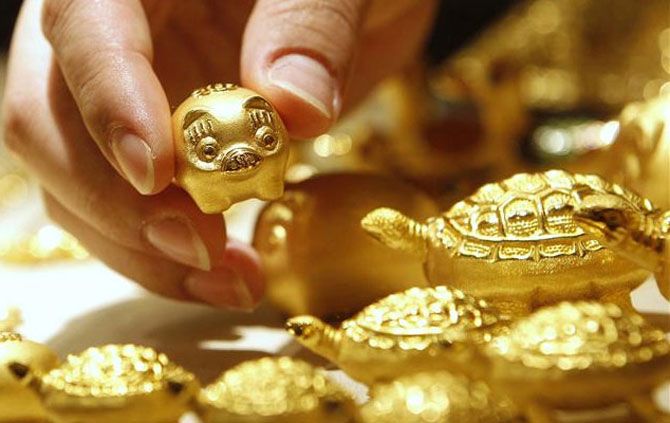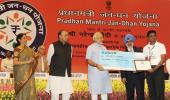Official sources say that the finance ministry is aware of the possible spike in smuggling activity and has already asked intelligence agencies to tighten their vigilance and come down on the unofficial entry of gold into India.

The hike in import duty from 10 per cent to 12.5 per cent, along with three per cent GST, has taken the total tax on gold to 15.5 per cent, providing potential stimulus to smuggling.
A few veteran bullion analysts, who didn't wish to be named, have in fact estimated that a staggering 200 tonnes of the precious metal would make its way into the country illegally this calendar year.
This is over and above the existing quantity of gold currently being smuggled into India, and the figure could go up to as much as 300 tonnes within the next 12 months.
Official sources say that the finance ministry is aware of the possible spike in smuggling activity and has already asked intelligence agencies to tighten their vigilance and come down on the unofficial entry of gold into India.
Surendra Mehta, National Secretary, Indian Bullion and Jewellers Association says, “We are sure that with the increased vigilance our borders are now more secure, and that illegal entry of gold into the country will definitely be prevented.
"If the government is able to catch and punish unfair trade practices, 12.5 per cent import duty on gold will not hamper honest jewellers.”
Mehta explains that Chinese importers pay 13 per cent value-added tax (down from 17 per cent in March 2019) on gold products in spite of the fact that 50 per cent of the supply comes from mines in the country.
In India, however, with mot supplies being imported, 15.5 per cent (12.5 per cent duty plus three per cent GST) overall tax should be in line with the global trend of taxing gold.
Chinese consumers also pay five per cent consumption tax on luxury items.
However, with the increase in duty, the margins of smugglers have also increased, and this will tempt them to spend more and take extra risk, find new avenues to bring more gold in India, explained one source.
According to the Gold Survey for 2018 by the GFMS, “(About) 154 tonnes of gold are estimated to have entered the country through unofficial channels in 2018 compared to 134 tonnes in 2017.”
The report also had this to state: “Unofficial supply increased with gold coming through the eastern, north-eastern and western regions of the country, with small- to medium-sized jewellers selling such gold.
Anecdotal evidence also showed that some gold entered from Singapore. We learnt that 24-carat gold lands in Singapore, where it gets melted into rough chains (weighing up to 200 gm), and is then smuggled into India.
This gold is then converted into small bars that are sold in the market.”
At present gold in the cash market is traded at a four per cent discount while RTGS (official business) is available at a two per cent markdown.
Sources say, “In order to improve business margin, jewellers will increasingly prefer to deal with unofficial gold and for that there are expectations of a major cash hoarding business to evolve despite the two per cent TDS on high-value cash withdrawals from banks.”
Hence, apart from boarders, extra vigil is needed on cash withdrawals as well. Cash deals in the parallel market are already flourishing, employing tens of thousands and serving as a major source of financing during elections.
“There is now a higher incentive to be in this business,” the source explains.
However, unofficial inflow from destinations such as Dubai could go up significantly with a larger number of tourists and non-resident Indians bringing larger quantities of the metal to India.
Colin Shah, vice chairman, the Gem & Jewellery Export Promotion Council, says that with import duty rising, exports from domestic tariff areas will be impacted as exporters will face increased cost of working capital.
These exporters first pay high tax and then claim refunds. And till refund money comes, their capital remains blocked.
“These exporters are finding even 10 per cent duty high, 12.5 will certainly hit them,” he said.
According to the council’s data exports from the domestic area was $3.32 billion against total exports of $39.68 billion.
Photograph: Reuters












 © 2025
© 2025